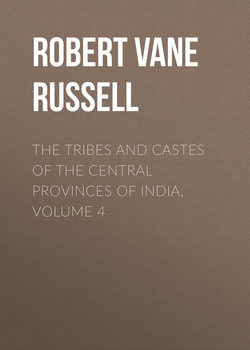Читать книгу The Tribes and Castes of the Central Provinces of India, Volume 4 - Robert Vane Russell - Страница 88
Part II
Articles on Castes and Tribes
Kumhār—Yemkala
Vol. IV
Lakhera
2. Social customs
ОглавлениеThe bulk of these artisan and manufacturing castes tell stories showing that their ancestors were Kāyasths and Rājpūts, but no importance can be attached to such legends, which are obviously manufactured by the family priests to minister to the harmless vanity of their clients. To support their claim the Lakheras have divided themselves like the Rājpūts into the Sūrajvansi and Somvansi subcastes or those who belong to the Solar and Lunar races. Other subdivisions are the Mārwāri or those coming from Mārwār in Rājpūtana, and the Tarkhera or makers of the large earrings which low-caste women wear. These consist of a circular piece of wood or fibre, nearly an inch across, which is worked through a large hole in the lobe of the ear. It is often the stalk of the ambāri fibre, and on the outer end is fixed a slab decorated with little pieces of glass. The exogamous sections of the Lakheras are generally named after animals, plants and natural objects, and indicate that the caste is recruited from the lower classes of the population. Their social customs resemble those of the middle and lower Hindustāni castes. Girls are married at an early age when the parents can afford the expense of the ceremony, but no penalty is incurred if the wedding is postponed for want of means. The remarriage of widows and divorce are permitted. They eat flesh, but not fowls or pork, and some of them drink liquor, while others abstain. Rājpūts and Banias will take water from them, but not Brāhmans. In Bombay, however, they are considered to rank above Kunbis.
